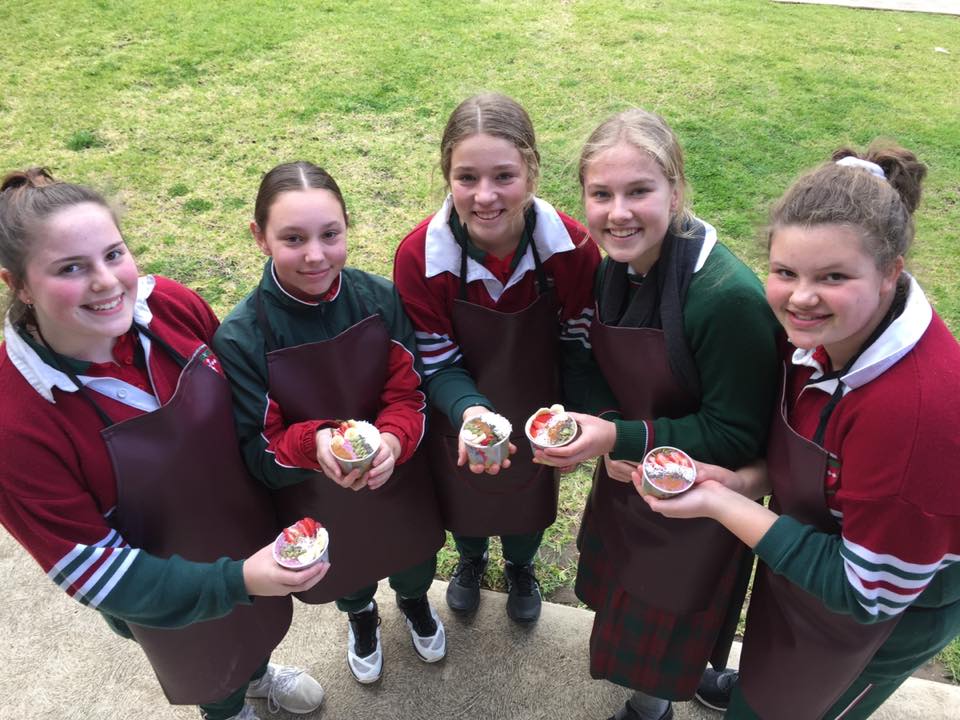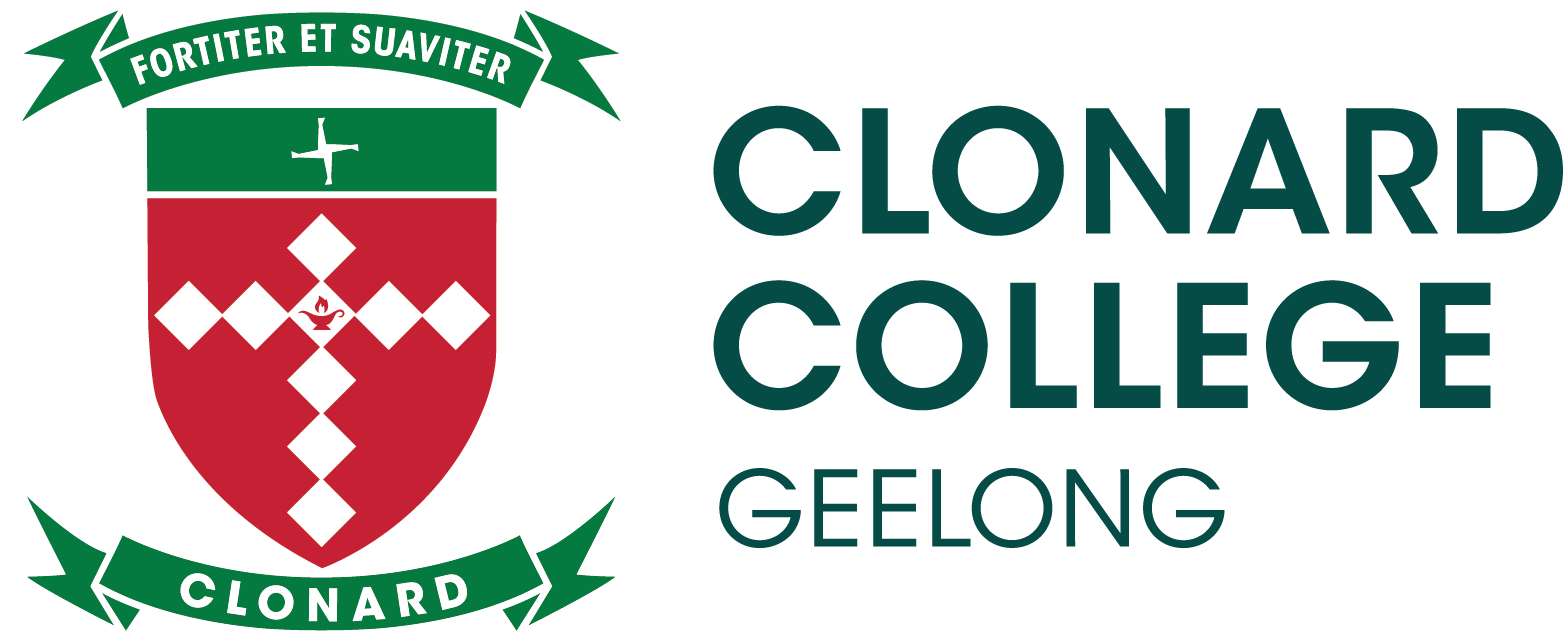Our Purpose
Wellbeing 4 Learning
At Clonard we pride ourselves on offering opportunities for our community to learn the key concepts of living well. By explicitly and implicitly teaching key Social Emotional skills and competencies, we aim to develop well-rounded, confident young women who can live their best lives. As we continue to learn about the latest research in this emerging area of Wellbeing science, we will continue to adapt and adjust our approach.
Our explicit Wellbeing 4 Learning curriculum is modelled on best practice with many interactive, engaging activities that promote connection and relationship with their Wellbeing teacher and the Clonard community.
‘Who we are as individuals is not simply located in us but around us, our relationships with others and in our experiences of those relationships’ (eXcel Pg 8).
Working in partnership with families we will focus on achieving:
- improved student learning outcomes
- increased social and emotional intelligence
- a better understanding of our character strengths
- increased GRIT and resilience
- improved understanding of growth mindset
- better mental and physical wellbeing
- engagement with learning and our peers
Our Wellbeing Domains
There are six overarching domains that are supported by scientifically-based skills and knowledge. Promoted through engaging activities and positive practices, these are applied throughout the College, with data analysis and a sound evaluation strategy built in for important feedback.

Learning skills to amplify positive emotions, practice gratitude and
develop resilience.
Knowing and developing our unique strengths – use strengths to meet challenges, be in the moment, and increase flow and motivation.
The development of respectful, meaningful, authentic and energising connections with others and the skills to ensure
they thrive.
Finding purpose, thinking beyond ourselves and feeling what we do is valuable
Working toward and reaching goals, belief that challenge can be overcome with a growth mindset, grit and persistence
Eating well, moving regularly, sleeping deeply, practicing mindfulness and recognising the link between physical and mental health
Modelled on curriculum that is evidence-based and developed by world leaders in this area, we are confident that our students will attain skills that will enable them to thrive academically, socially, spiritually and emotionally.
By learning and practicing the skills and strategies of PERMAH we can flourish – Live life to the full! Feeling good and doing good!



School Improvement Leaders - Wellbeing
| Tania Anticev and Andrew Damon |
|---|
Year Level Community and Wellbeing Leaders (WELCOM) 2024:
| Year 7 | Year 8 | Year 9 | Year 10 | Year 11 | Year 12 |
|---|---|---|---|---|---|
| Lance Houlihan | Therese Bourke & Kate Nolan (Assistant) | Gabrielle Blythe | Garry O'Donnell | Joanna Wiltshire & Jason Grozdanovski | Sarah Fish |
Our Work
Our work is guided by evidence and current research. Teachers at Clonard are aware that students with good mental health and strong wellbeing practices are clearly better equipped to cope with the everyday demands of school life. On the other hand, learning is inhibited for those students with poor mental health and wellbeing (Sawyer, 2000).
Improving wellbeing leads to improved performance in the workplace and in the classroom. Clonard is looking at best practice and the latest research to ensure our girls are ready to learn and reach their full potential.
While some people believe that a focus on wellbeing takes time and resources away from academic pursuits, others are aware of the evidence that “students who thrive and flourish [in terms of wellbeing] demonstrate stronger academic performance” (Norrish, Williams, O’Connor, & Robinson, 2013).
Students with high wellbeing gain higher grades and lower rates of absence (Suldo, Thalji, & Ferron, 2011), as well as higher self-control and lower procrastination (Howell, 2009) and enjoy more creative, open-minded thinking (Fredrickson & Branigan, 2005). Indeed, positive education and Clonard’s Wellbeing for Learning philosophy is a complementary goal, rather than a competing goal with academic performance.
We are very proud of the work we are doing in this area and look forward to parents engaging with us on their daughter’s wellbeing journey.
‘I derive great pleasure from seeing the young women entrusted into our care, grow academically, emotionally and spiritually and enter life outside of Clonard feeling both prepared and empowered to make a difference in their community.’
Dan Madden, Teacher
Fortiter et Suaviter - Strength and Kindliness
Our Evidence
What the research says:
‘As a central outcome of schooling, wellbeing is integral to learning excellence, good health and life success’ (Ministerial Council of Education, Training and Youth Affairs (MCEETYA) 2008, Melbourne Declaration on Educational Goals for Young Australians).
‘A common assumption is that a focus on wellbeing within education takes time and resources away from academic pursuits. However, there is reason to believe that students who thrive and flourish demonstrate strong educational performance’ (Seligman, 2011).
‘A positive sense of Wellbeing can foster higher levels of engagement, school connectedness, emotional vitality, psychosocial functioning and academic performance’ (eXcel, pg 2).
‘A positive sense of wellbeing supports a base for rich learning that enables young people to flourish’ (Catholic Education Melbourne 2017, Horizons of Hope: Wellbeing in a Catholic School, p.3).
What the students say:
‘It’s made me realise that at times I do have a fixed mindset but now I can identify when I have those thoughts and then I change those thoughts’.
‘It’s great because I was the type of person to give up and now I understand that it’s ok to get things wrong’.
‘Wellbeing classes were great because I learnt about neuroplasticity and the pathways…’.
‘The things I learnt in Wellbeing are making me think about a lot of things…I always find myself thinking of the ways I can create a growth mindset and I am really happy that I am seeing results’.

What you are others who come after you will be - Daniel Delany
Our Program
Each student in Year 7-12 will be involved in our Wellbeing Program.
The Wellbeing program is delivered via three key strategies. The 18 minute morning wellbeing time at the beginning of each school day fosters connection and belonging with peers and teachers. This time includes The Resilience Project curriculum resources, Pulse educator impact check ins and Positive behaviour for Learning lessons. In Years 7-10, wellbeing curriculum is included in the Health and Physical education classes for all students, and Year 11 students have one period per cycle of specialist wellbeing. These classes will work together with other year level initiatives such as Communication Connection days, guest speakers and Year level camps to undertake explicit learning that focuses on social and emotional learning, positive education and physical movement.
In response to student, teacher and parent data and to support student learning, we have introduced a break between each class. There is significant evidence to suggest that breaks keep our brains healthy and play a key role in cognitive abilities such as reading comprehension and divergent thinking (the ability to generate and make sense of novel ideas).
‘Rest is indeed not idleness, nor is it a wasted opportunity for productivity’ (Goodwin et al, 2016).
It is ‘exactly the same principle that Google introduced some years ago to their knowledge workers’. Both students and teachers benefit from these frequent breaks (Pasi Sahlberg, 2019).
The table below indicates where those breaks are in the day.


The canteen will be open for students in Breaks 2 and 3.
Domains of Wellbeing

Frequently Asked Questions
As part of Wellbeing, we encourage students to leave the classroom between classes and engage with their peers, get some air and have something healthy to eat, have a drink, use the toilets so they are ready to learn.
How many spare study periods do senior students have?
The number of study periods depends on your course. For a full course at Year 12, students have five free periods per cycle. At Year 12 in Term 3 and 4, when the demands are great, the RE class will become a supervised study period. Students who have completed Year 12 subjects earlier in their program (Year 11 and 10), will have more study periods than those on a full program.
All students from Year 7 – 12 have a 5-period per cycle allocation of Religious Education.
Do we get less time than other schools in our subjects?
Every school has different time allocations to subjects. For VCE students it is important to know that every Study Design for every subject is written to 50 hours per semester. Under the current allocation, Year 7 – 12 subjects have approximately 78 hours per semester.
What about students on a late bus?
Students on late buses should ensure they have their books for Period 1 of the next day with them the afternoon before so that they do not need to go to their locker and can go straight to class. directly to Wellbeing. They should move quickly and directly to Wellbeing.
The canteen is open during Breaks 2 and 3.


